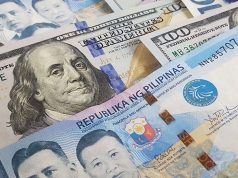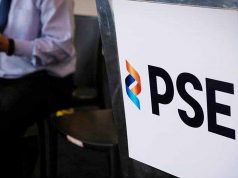At least 6.5% growth ‘easily achievable’

By Melissa Luz T. Lopez, Senior Reporter
THE PHILIPPINE ECONOMY can easily expand by at least 6.5% over the next few years on robust investments and consumer spending, analysts at S&P Global Ratings said, adding that sound policies and the infrastructure push should help lift growth prospects.
“Growth-wise in the Philippines, the past two years have actually been stellar. In terms of the outlook for the next few years, we think that 6.5% and above as a pace of growth is actually very easily achievable,” S&P economist Vincent R. Conti said in a webcast yesterday.
The credit rater forecasts another 6.7% growth for Philippine gross domestic product (GDP) this year to match its 2017 pace, but will fall short of the government’s 7-8% target.
The economy expanded by 6.8% in the first quarter, and state economic managers believe second-quarter growth — to be reported on Aug. 9 — could have clocked at least seven percent.
In April, the debt watcher revised its credit outlook for the Philippines to “positive” from “stable,” hinting at stronger chances of bagging a rating upgrade from the current “BBB” level, which is a notch above minimum investment grade.
Mr. Conti said a young and agile Filipino work force is “very favorable” for the economy, helping to buoy household spending that contributes more than 60% to GDP and attract investments.
The rosy outlook is likewise supported by “very stable” fiscal and monetary policies.
“The ramping up of the infrastructure program is one of the relatively newer additions to the policy tool kit and that’s actually a positive. It can generate even further potential growth farther into the future,” Mr. Conti added.
State infrastructure spending totaled P280.8 billion in the five months to May, up 42.4% from a year ago, the Budget department has said. The government intends to spend P1.068 trillion on infrastructure this year, forming part of an P8-9 trillion program until 2022, when President Rodrigo R. Duterte ends his six-year term.
S&P sees limited credit rating impact from the passage of the second tax reform package currently pending in Congress, but noted that additional revenues should help boost domestic economic activity.
“I think overall, the second package is not likely to make much change either to the revenue or expenditure side of things on the budget. In other words, the fiscal impact is very small and unlikely to directly affect the rating,” said Kim Eng Tan, senior director for sovereign ratings at S&P.
“The key thing we are looking at in tax reform is if the government actually has the ability to carry this out.”
A measure that seeks to gradually cut corporate income tax rates to 25% from 30% now awaits approval by the House of Representatives. Projected foregone revenues will be offset by the streamlining of tax holidays and fiscal perks granted by 14 investment promotion agencies.
This follows the implementation of Republic Act No. 10963, or the Tax Reform for Acceleration and Inclusion Act (TRAIN), since Jan. 1 that cut personal income tax rates, with revenue losses — estimated at P10 billion a month — expected to be offset by the removal of some value-added tax breaks; higher fuel, automobile, mineral and coal excise tax rates, as well as new levies on sugar-sweetened drinks and cosmetic surgery.
S&P took into consideration TRAIN and “improved” fiscal policies in lifting its outlook for the Philippines, saying these factors build the case for “more sustainable public finances and balanced growth” in the next two years. The government plans to raise P2.846 trillion in revenues this year, 15.1% more than 2017’s P2.473 trillion and accounting for 16.2% of GDP. Tax collections reached P1.186 trillion as of end-May, a fifth more than the year-ago P996.5 billion.



